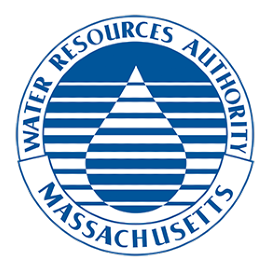The MWRA's Industrial, Commercial and Institutional (ICI) Water Management program was developed to help businesses, industries and institutions improve their water efficiency, thereby reducing operational costs.
During the early 1990s, the ICI program produced surveys and water efficiency plans for almost a dozen schools and athletic facilities, including high schools, vocational-technical schools, colleges, universities and YMCAs.
The facilities studied had annual water usage ranging from 2 million gallons to over 17 million gallons. Each facility studied had at least one area where water efficiency measures could be employed to achieve significant water reductions.
This report has been developed based on lessons learned from previously conducted, sector-specific water use surveys.
Listed below are some suggestions and examples of water efficiency measures that have proven successful or have potential applications in typical facilities studied throughout the MWRA service area. Water and sewer rates, as well as cost/savings paybacks, are based on 1993 figures for all examples. For context, water costs in 2020 are approximately 5.7 times the 1993 rate.
Important note: Before implementing any water efficiency measure be sure to follow all rules and regulations regarding public health and safety requirements and the Massachusetts Plumbing Code. Be aware that the 360 CMR 10.000 (PDF) (MWRA Sewer Use Regulations - PDF) prohibit the discharge of once-through cooling water to the MWRA sewer system.
Sanitary
- Install water saving aerators or spring loaded valves on all faucets.
- Install water saving shower heads.
- Retrofit flushometer toilets and urinals with low consumption valve replacement kits.
- Replace existing higher consumption toilets and urinals with Massachusetts Plumbing Code conforming low flow toilets and urinals which use 1.6 gallons per flush (gpf) and 1.0 gpf or less, respectively.
- If only replacing a limited number of toilets, replace heavily used fixtures located in high traffic areas first.
Cafeteria and Food Services
- Install spray rinsers for pot washing and reduce flow of spray rinsers for pre wash.
- Operate dishwashers with full loads only, and shut off when not in use.
- Control flow of water to garbage disposer or consider eliminating the use of the disposer altogether.
- Investigate reusing rinse water from dishwasher for garbage disposer or for pre wash cycle.
Classroom & Labs
- Ensure that all washing equipment have aerated spray nozzles equipped with shut off valves.
- Eliminate once through water cooling of lab equipment such as autoclaves and lasers by incorporating into a recirculating chilled cooling loop.
- Retrofit Bradley (circular) sinks with water saving spray heads or sectional spray heads.
Pool
- Lower pool water level to reduce amount of water splashed out.
- Evaluate filter backflush schedule, reduce backflushing to minimum necessary without compromising public health and safety.
- Install insulated pool cover and lower pool temperature, if appropriate, to reduce heating costs and evaporation.
Landscaping & Exterior
- Water only during early morning or evening to reduce evaporation.
- Water only when necessary. Install tensiometers to sense soil moisture content.
- Remove thatch and aerate turf to encourage movement of water to roots.
- When making alterations in landscaping reduce lawn area and opt for less water intensive plants.
Heating & Cooling
- Minimize the water used in cooling equipment, such as compressors, in accordance with manufacturer's recommendations. Utilize switches and timers to match cooling water to duty cycle of equipment.
- Ensure return of steam condensate to boiler for reuse.
- Avoid excessive cooling tower blowdown, by minimizing consumption with automatic controls and conductivity meters.
- Make-up water and blowdown should be submetered and recorded regularly to address any anomalous usage patterns that could indicate leaks or problems in system.
- Retrofit once-through water-cooled refrigeration and air conditioning units and incorporate into recirculating cooling loop wherever possible.
- Replace water-cooled equipment with air-cooled units where possible and economically feasible.
Building Maintenance
- Read water meters.
- Read your meter daily if your facility uses more than 7.5 million gallons of water per year and weekly if your usage is more than 1 million gallons annually. Plot and analyze the data to determine patterns in your water usage; any inconsistencies may be due to leaks or non-functioning equipment.
- Locate and repair leaks.
One leaking faucet can waste up to 1000 gallons of water per week -- that's over $300 per year. - Check steam traps and solenoid valves.
Check all valves and switches on all water using equipment periodically, replace or repair as necessary. - Maintain insulation on hot water pipes.
- Any water using equipment or fixtures that wear out should be replaced with water saving models or air-cooled units where possible.
General
Initiate an employee awareness program.
- Get input and ideas from staff, students and faculty. Encourage water conservation at home as well.
- Encourage water conservation.
Increase public awareness with brochures with water saving ideas (available from the MWRA). - Develop a water management plan.
Know your water and water related costs.
- Set goals and offer incentives for successful ideas.
- Delegate responsibility for actions.
- Chart progress and post results.
